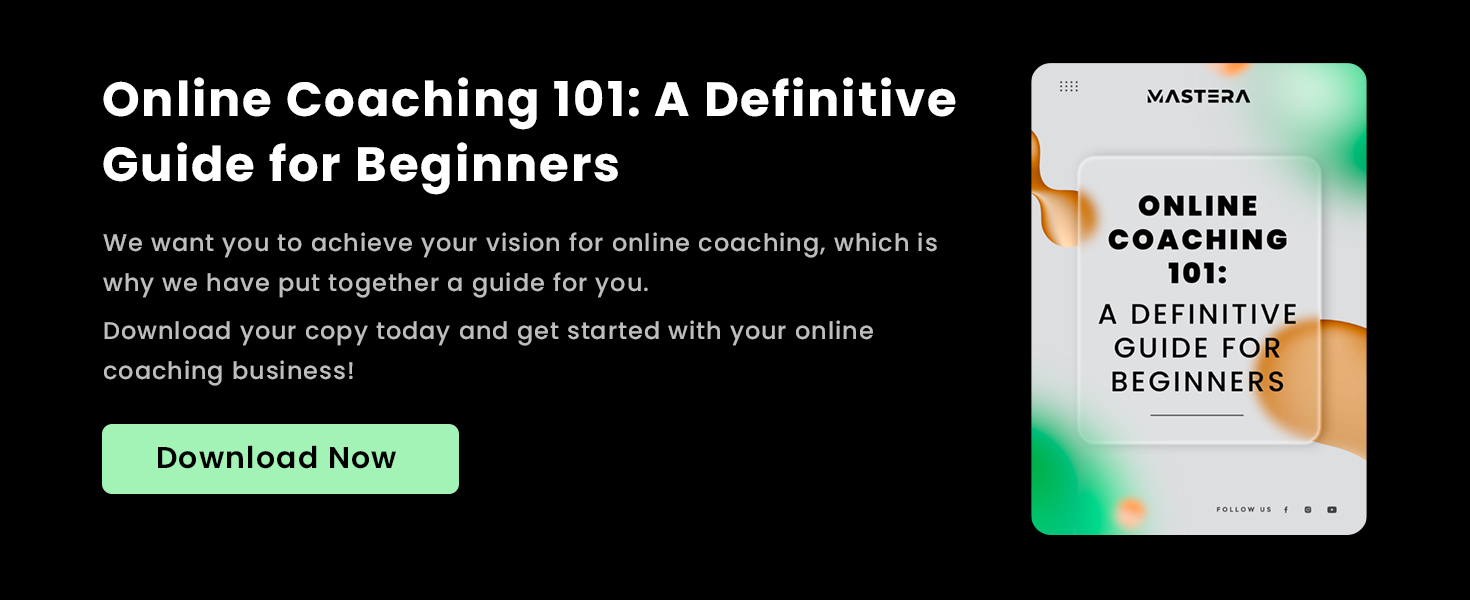If you have a skill, you can start an online class business. But how much money can you really make selling online courses? Well, there are a few things to consider before you can think about calculating potential earnings.
You need to consider your pricing, conversion rates, number of followers and the losses you might incur, and then you will be able to work out how much you could make with your online class. Below, we outline these components and what they can mean for your potential earnings.
So, let’s dive into it!
Make Money With Online Courses
How Are You Going To Deliver Your Classes?
Once you have decided upon your skill, it’s time to think about how you are going to deliver your course. There are lots of ways to do this, with online course platforms offering complete teaching solutions, or you could build your own website and delivery system from scratch.
Which option you choose will depend on your experience level, and what you want to gain from it, and you also need to consider the costs associated with each option.
Using teaching platforms
Pros
- Built-in templates to work from
- Payment gateways built-in
- Support to help you create and sell your course
Cons
- Initial (and possibly ongoing) investment often required
- You may only get a share of the profits
Using your own website
Pros
- You get all the profits!
- Nearly unlimited possibilities for design and delivery methods
- You can market it directly to your following on your existing website
Cons
- Websites cost to buy and develop
- They require expertise to set up and operate
- You need to manage and promote everything by yourself!
Pricing Your Online Courses
How much you charge for your online class business will greatly depend on your delivery method. The most common is video on demand (VOD), which involves creating videos for your students to watch in their own time. You might also offer live 1:1 training, or other live classes, and these usually allow you to charge a little more.
However, the amounts you charge are really up to you, and will depend on how much you are offering and who your target audience is.
If you are selling a sought-after skill to a large market, you will be able to charge more than if you are offering a basic education in something that is readily available from other creators.
VOD
Example course prices for video on demand classes usually range from $10 all the way up to thousands of dollars if there is a lot of video on offer. If you only provide 2-3 hours’ worth, expect to be able to charge closer to $10-$50. However, if you are offering hundreds of hours of content, you could easily charge hundreds of dollars for it.
Live training
Live sessions allow you to charge more, with 1:1 training being where the real money is. This takes more of your time and is in much higher demand. If you’re an expert in your field, you could charge hundreds of dollars per hour, but even if you’re not offering a premium service, 1:1 training could still net you up to $100 per hour.
 A mix
A mix
Having a mix of video on demand and live webinars is a good way to balance things out. You can also charge a subscription fee, giving them access to both on demand video to watch when they want, along with essential live sessions every week or month to supplement the videos and deliver more key information.
Monthly costs could range from less than $100 to thousands of dollars, and once again it will depend on your skill level and your audience. A course in law could cost $500 per month, while a digital marketing course might only cost $75 per month.
But you can’t just think about pricing, as you also need to consider your following and your conversion rates.
How Much Revenue Can You Make Online Selling Online Courses?
If you already have a following, you will be curious as to how much you can potentially earn through your online class business. To work that out, we can look at some example calculations of earnings based on your course price and how many subscribers you have.
Let’s say you have a goal to earn $1,000 per month with your $50 online course. If you have a following over your various social media and other platforms of 1000 people, it’s easy to work out how many people you need to subscribe to your course. You will simply need 20 people, or 2% of your following, to subscribe to your course to meet your $1000 goal.
The cross-industry average conversion rate for landing pages (the page from which people find and purchase your online course) is about 2.35%, with that of online courses actually being closer to 1.5%.
Thus, you can expect to have a rough total of 1.5% of your audience convert into paying members of your online course. If, like in our example above, you get 2% of your following to sign up within the first month, you are already above what you should estimate to achieve on average.
How Do Can You Increase Your Profits?
Increasing the Value of Your Online Course
Well, the first option would be to increase your course price, but this might have the effect of reducing your conversion rate, either balancing things out again or even reducing your revenue further. Instead, you need to look at scaling up.
This means growing your following and maintaining a decent conversion rate. 1.5% is the average, but you might see less, and you might see more. But for the sake of example, let’s stick to 2%.
If you instead have a following of 10,000 people, and market your course regularly to them, you will only need 0.2% of them, still 20 people, to purchase your course each month. This is far more achievable, and also allows for more sustainability with your earnings.
The 1.5% conversion rate is a lifetime measurement, in that you can expect your total number of conversions over the lifespan that your course is available to be around 1.5% of the total people that see it on your landing page.
This needs consistent marketing of course, but in this case, you could expect to see about 150 people signing up to your course over its lifetime, netting you 150 x $50 in revenue, equaling $7,500 in total if it’s a one-off purchase, and this amount per month if it’s a subscription service.
This is a smarter metric to go by, as some months you may only see a few hundred dollars, and others you might be more successful and make a few thousand.
But over time, you can expect to see this trend in total earnings from your online class business. It also illustrates the massive benefit of offering a subscription service, yielding recurring monthly revenue.
Costs to consider
As with any business venture, it’s not all about profits. You need to consider your losses as well, and you then stick these into a simple equation (given below) to find out how much money you will actually see each month.
However, you also need to consider the taxes you’ll need to pay as well. These will vary depending on where you live, and how much you earn. We’ll go through these in more detail below, but let’s first discuss the different losses you might incur when creating your course.
 Costs to build an online course
Costs to build an online course
The first cost you need to think about will depend on how you set up your course. If you decide to sell your course via your own platform, such as a WordPress website, you’ll need to buy yourself a domain along with some web hosting.
You can expect this to run up anywhere between $100 to $1000, depending on which software you use and who you choose to host your site.
You then need to consider what software you’ll use to build the course. There are lots of apps out there, usually in the form of plugins that you simply install onto your website, and these are called Learning Management Systems (LMS).
These vary in price quite a lot, but you can usually get systems that come with an annual price tag or a monthly fee. The price you can expect to pay is around $200, or perhaps $39 per month depending on the platform you use.
If you choose to use platforms like Mastera or Udemy, you will need to pay some monthly fee. For example, if your students find you organically on Udemy you’ll only take home 50% of the course price. If you use Mastera you will pay only between $39 and $199 per month, and so you need to factor in these costs to your course as well.
If, for example, you choose the $39 per month option on Mastera and you have one subscriber to your $100 membership, you’re making a $71 profit! But if you sold the same classes as a course on Udemy, you’d only make $50, with Udemy taking the other $50.
Thus, you need to think about which course platform you choose, as many don’t allow you to create subscription courses either, which means you can’t set up a monthly recurring revenue model.
Finally, you need to consider your taxes. The rate for self-employed people in the USA is currently 15.3%, but the exact rate can vary depending on a number of factors. But if we use this in an example, we can see what kind of costs we can expect to rank up with our online class business when selling it using different models.
An example of our earnings from our online class business:
Imagine we are selling a health and wellbeing course for $100. Let’s say we start with 10000 followers, and we get a modest 1% conversion rate, with us managing to get 100 new signups each month.
Let’s imagine this stays the same for 6 months, and then we manage to double our following to 20,000 by hosting a free live event. We also manage to increase our conversion rate to 1.5% through better marketing, but we keep our course price at $100 the full time.
Our costs at the start are made up of just our website hosting, which let’s say costs us $200, and our learning management system costs over the year become 12 x $30 for a total of $360.
Thus, our costs for creating our course are $560. Let’s also consider various website maintenance costs, and let’s say we also hire a designer to help us with the video content and animations for our course, at a combined cost of $6,000.
However, we also spend $1,000 at the outset on Facebook marketing, and then we run a $1,000 campaign each month for the first 6 months, before tripling our efforts to $3,000 for the next 6 months.
This gives us marketing costs of (6 x $1,000) + (6 x $3,000) = $24,000. This sounds like a lot, but bear in mind this is spread across 12 months, for an average monthly marketing cost of $2,000.
 Launch
Launch
At launch, we make 100 sales, netting us 100 x $100 = $10,000. Then, we make the same number of sales each month for the following 5 months. This nets us $50,000 for the first 6 months.
Months 6-12
Then, we double our following through our free live event, and increase our conversion rate to 1.5% (at the expense of extra marketing noted above). This means we now get 1.5% of 20,000 people signing up each month.
This equates to 300 sales each month at $100 each = $30,000. We do this for another 5 months, which yields us a total of $180,000 for the second half of the year.
Total
In total then, we make $180,000 + $50,000 = $230,000. However, we have our costs for the website to consider, along with the bill for the designer. These run at a total of $560 + $6,000 = $6,560, and then we have our total marketing costs of $24,000. This yields a total cost for the course of $30,560.
Profits
So, to get our total profits we need to use the equation below.
Total profits = (total earnings – total costs) x (1 – (tax rate/100))
Total profits = ($230,000 – $30,560) x (1 – (15.3%/100)) = $168,925.68 for the year.
Now, as we have said, the specific tax you pay will vary by year and by how much you earn, and you may have other losses to incur elsewhere in your business, for example energy costs and any other equipment you needed to buy to record videos or set up the course in the first place.
But hopefully the examples above give you an idea of how to work out just how much money you could make with your online class business!
 What You Can Offer To Increase Earnings?
What You Can Offer To Increase Earnings?
We mentioned the idea of launching a free event to try and boost conversion rates in our example. Free live events and webinars are great ways to boost engagement and get more subscribers, but they’re not the only way. You can also offer other free content, like videos and blog content, throughout your course’s lifetime.
Offering your subscribers extras for remaining subscribed to your course is a great way to retain their custom, so think about how you can continue to improve your course even after launch.
Discounted prices at launch might also boost your sales as well and offering discount codes later down the line can also be a good way to bring more subscribers through the door!
All of these are great ways to earn even more with your online class business!



 A mix
A mix Costs to build an online course
Costs to build an online course Launch
Launch What You Can Offer To Increase Earnings?
What You Can Offer To Increase Earnings?
